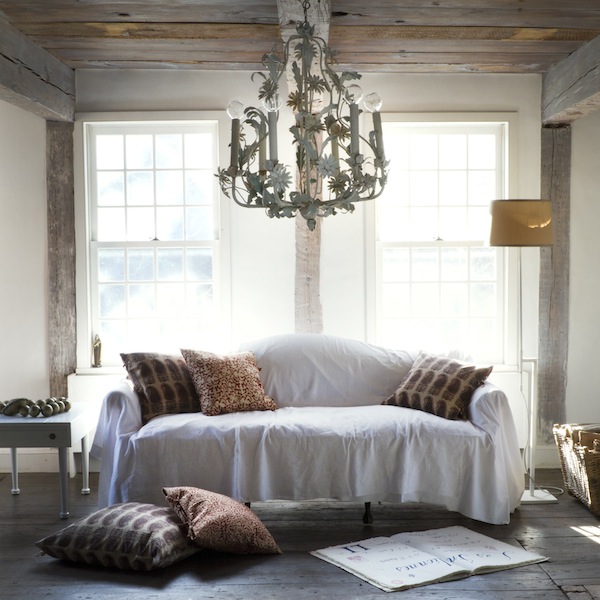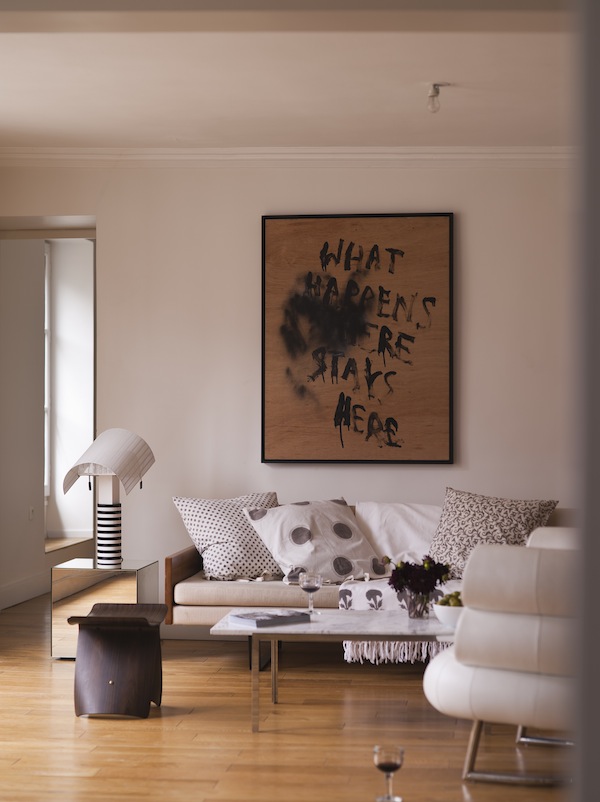April 28, 2015
TEXTILE DESIGNER MARY BERGTOLD MULCAHY
The chance discovery of block-printed bedcovers in a Unicef store led fashion turned interior stylist Mary Bergtold Mulcahy on a long yet fulfilling journey. After an extensive search to find a way to making this type of fabric, she was able to find a craftsman, Srinivas Pitchuka, in a small village in southern India who could create what she was after, using the ancient printing technique of Kalamkari. In 2002 Mary launched Les Indiennes from her base in New York state and has been busy designing and selling her textiles ever since. Yet despite the growth of her business, she says the production of her fabric doesn’t use any electricity in the village where it is made, create any pollution or disrupt the traditional way of life. Les Indiennes is also a Fair Trade employer for more than 50 families.
Which five words best describe you? Original, inquisitive, visual, bohemian, mom.
How did you get your career start and what path have you taken since? After attending the Fashion Institute of Technology in NYC, I became an editor at Harper’s Bazaar. When I married and had children, my interests turned to home and interior design. I made the switch to styling interiors. This was second nature as my mother was a very talented decorator, and I grew up in an artistic environment.
I’ve always been interested in textiles and discovered some block-printed bedcovers at the local Unicef store. I looked everywhere for similar cottons, but found nothing so I posted an ad in TradeIndia (a B2B message board). After receiving many mediocre samples, Pitchuka Srinivas, my current business partner, sent pieces which stood out from the rest. He is a traditional Kalamkari artisan. Through his work I discovered the parameters that began to define my vision.
Using only natural dyes on organic cotton, I changed the background colour from a dark beige to a creamy white, a treatment unheard of in the Kalamkari tradition. Taking complex Indian patterns, I edited, enlarged, and spaced them further apart.
With my new interest in Indian block prints, I proposed an editorial to a shelter magazine. After the story was published, I was deluged with inquiries about my textiles. This launched my business named Les Indiennes, a title the French gave to this type of fabric in the eighteen century.
What’s the best lesson you’ve learnt along the way? Never be afraid to take risks, and stick to your own vision.
What’s your proudest career achievement? Perhaps winning the International Design Award for interiors in 2008? Designing textiles is a joy.
What’s been your best decision? To not change the way artisans traditionally work in India.
Who inspires you? Brigitte Singh, Ines Boesch, Nigel Cabourn, Rei Kawakubo of Commes des Garçons.
What are you passionate about? Design, interiors, historical visual reference and, of course, shopping.
Which person, living or dead, would you most like to meet? Marie Antoinette.
What dream do you still want to fulfil? To create a foundation that supports independent traditional artisans of India.
What are you reading? The Last Mughal by William Dalrymple and Nancy Lancaster by Robert Becker.
images courtesy of les indiennes


